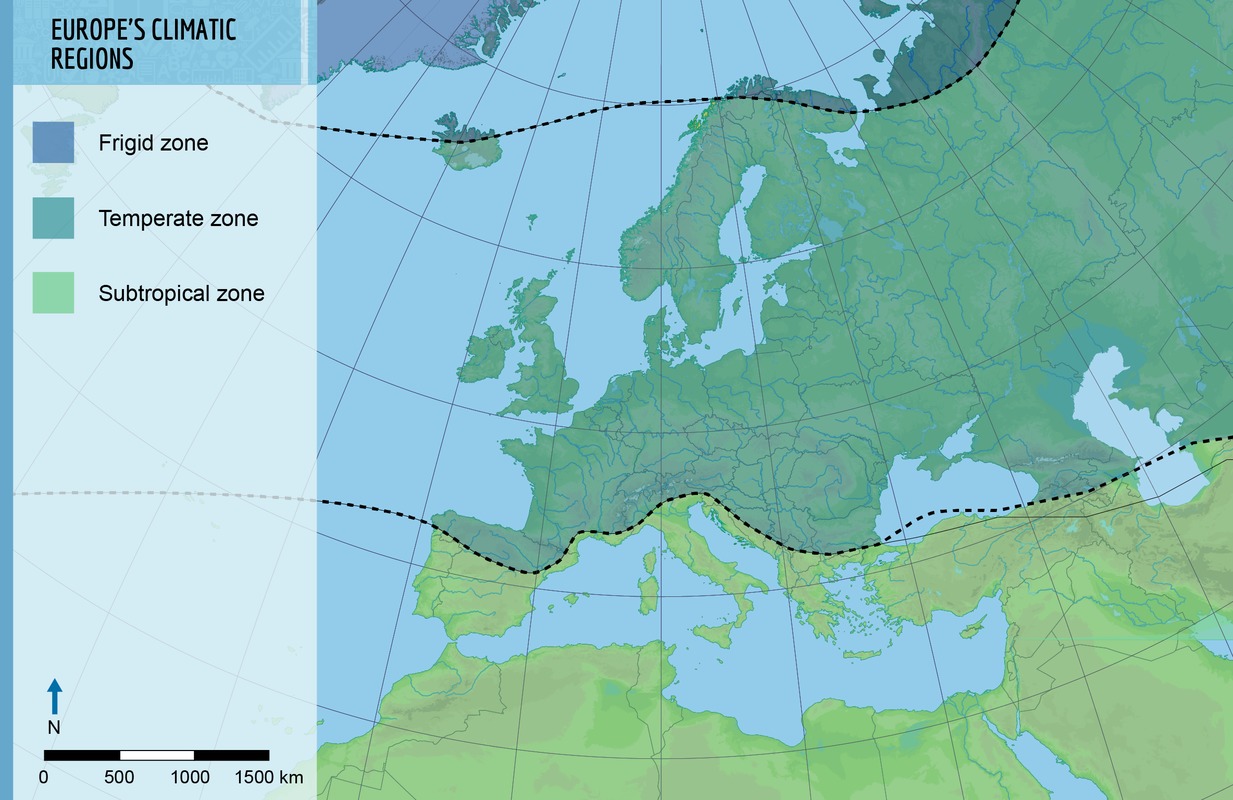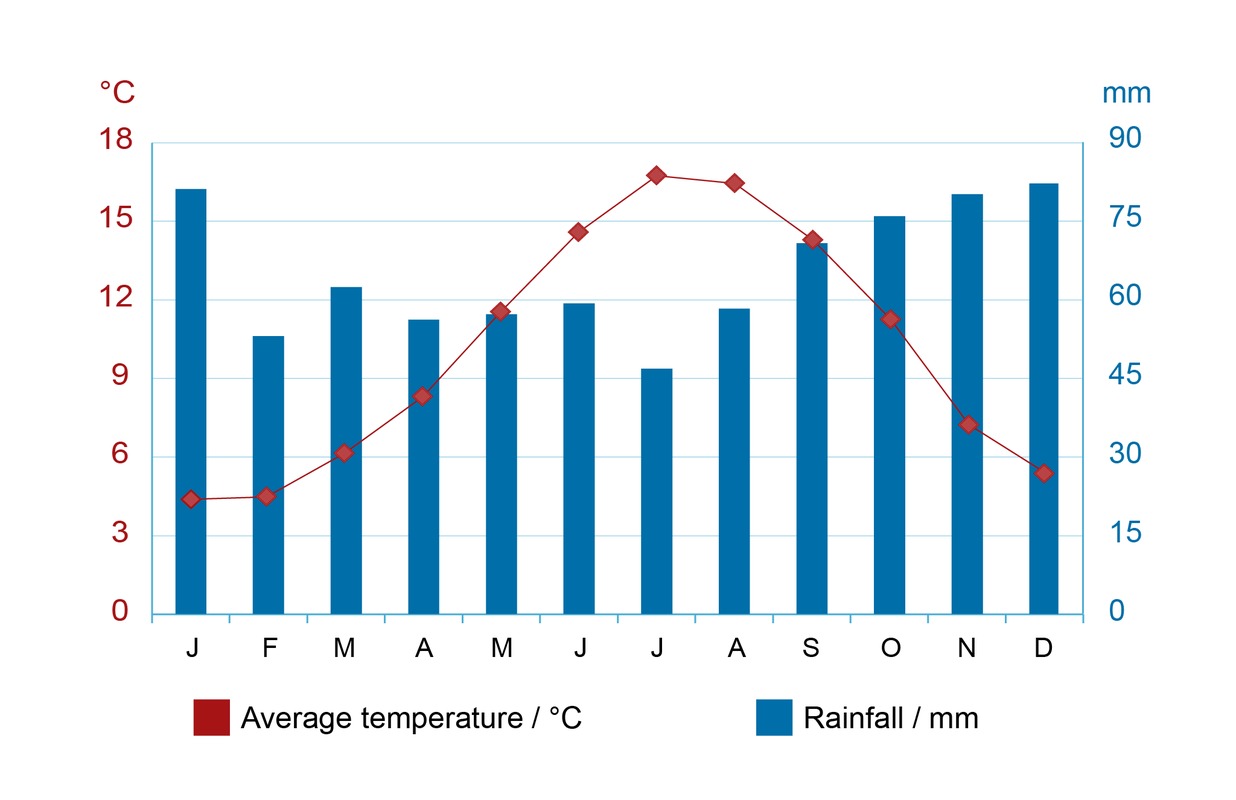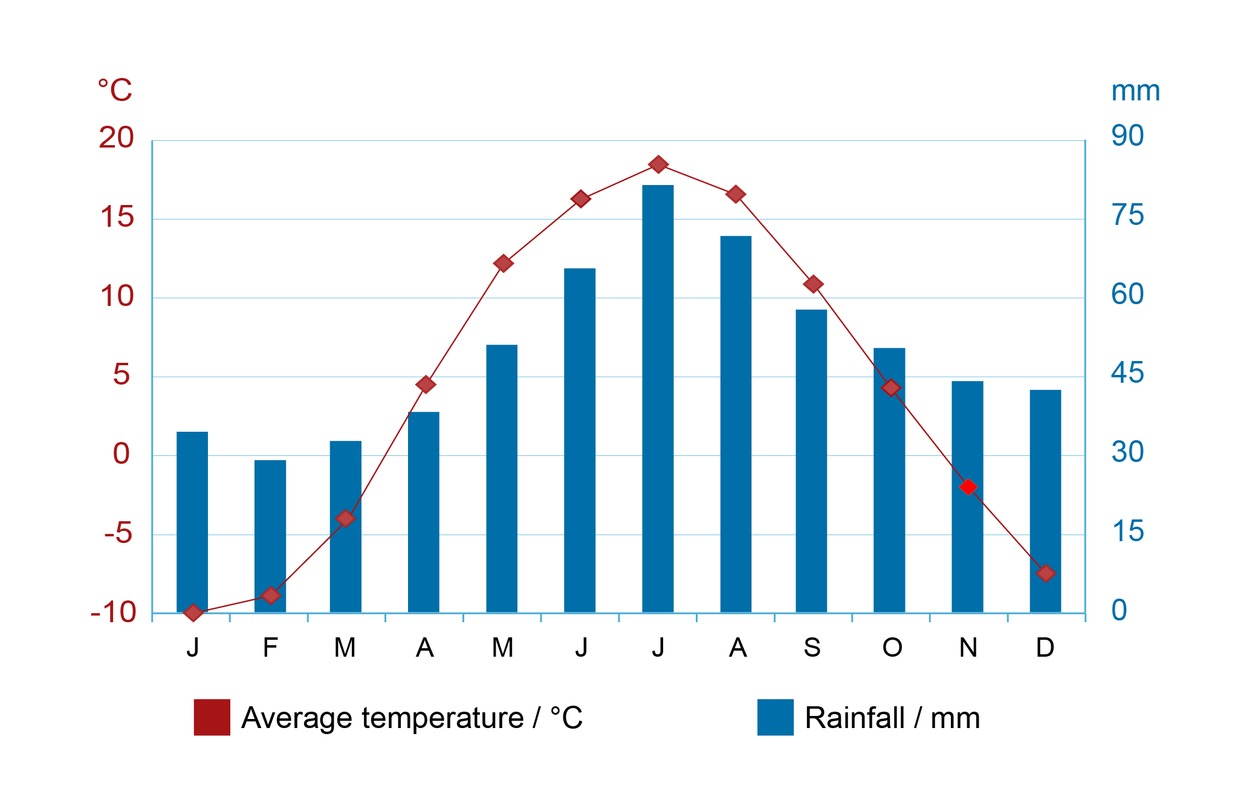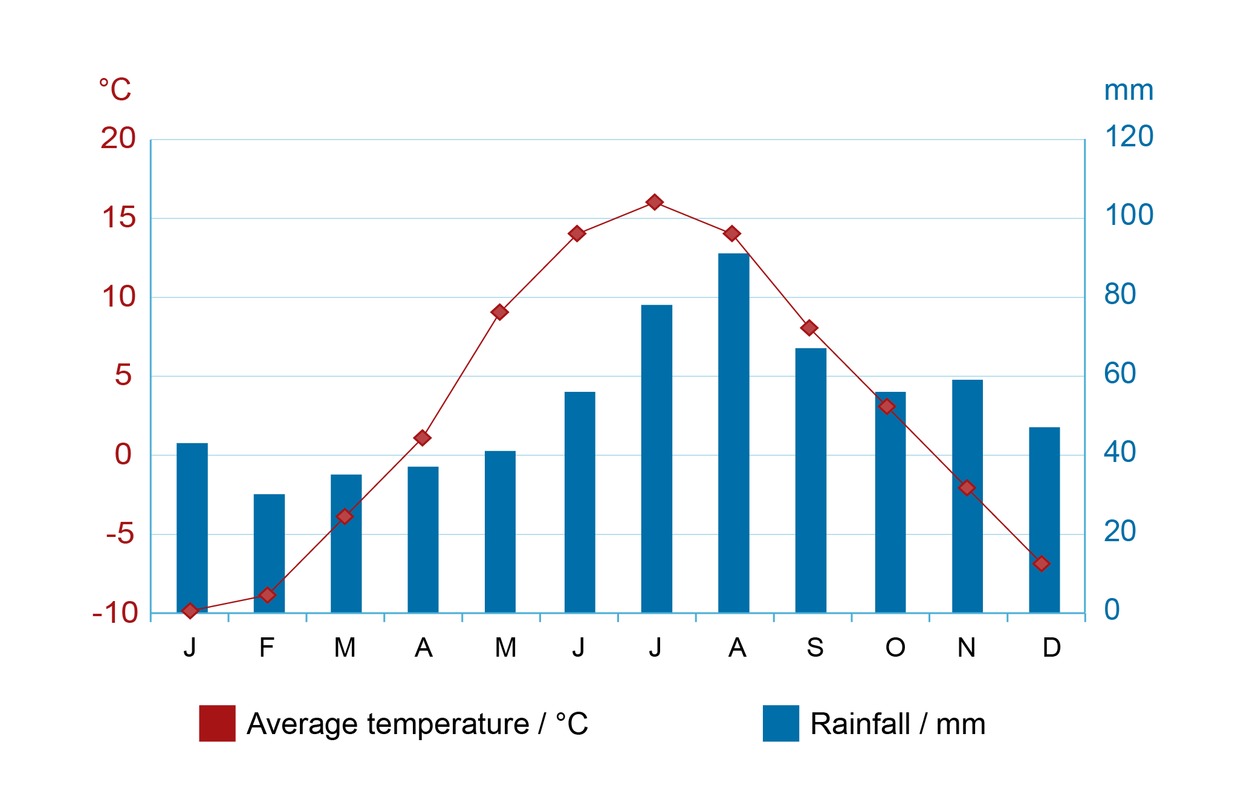10.7 Europe's climatic regions

Europe is a continent of three geographic zones: the frigid, temperate, and subtropical zones. The only geographic zone not to be found in Europe is the tropical zone, which only exists at latitudes closer to the equator.
1. The frigid zone
The frigid zone covers regions near the North and South poles. The northernmost parts of Europe, such as the northern tip of Scandinavia and the northern half of Iceland, are located in the frigid zone.
The monthly average temperature never rises above 10 degrees Celsius. Similar climatic conditions can be found in regions of high elevation.
2. The temperate zone

Most of Europe is part of the Northern temperate zone. This zone is mostly located between the Arctic Circle and the latitude of 40°N, covering the area between Scandinavia and Northern Italy.
Because the climatic conditions of the temperate zone vary greatly depending on various factors, it is divided into three climatic regions: maritime climate, continental climate and intermediate climate.
2a. Maritime climate
The westernmost parts of the European are located near the shores of the Atlantic Ocean. These regions receive winds from the ocean, resulting in high amounts of rainfall. These areas comprise the European maritime climate region.
Great Britain (the diagram on the right), Portugal, and Northern France are all part of the maritime climate region.
 The maritime climate is characterized by high amounts of rainfall throughout the year and a slight variation in temperature between the summer and the winter. The smallness of these temperature variations are caused by vicinity to the sea. During the summer, ocean winds bring cold air to the continent. During the winter, the winds bring warm air that helps to keep the winter temperatures relatively temperate.
The maritime climate is characterized by high amounts of rainfall throughout the year and a slight variation in temperature between the summer and the winter. The smallness of these temperature variations are caused by vicinity to the sea. During the summer, ocean winds bring cold air to the continent. During the winter, the winds bring warm air that helps to keep the winter temperatures relatively temperate.
2b. Continental climate
Most areas of Central and Eastern Europe comprise of inland regions that experience a continental climate. Russia, for example, is located almost completely within the continental climate region.
The continental climate is the opposite of the maritime climate in a number of ways.
Continental climate regions experience significant temperature variation throughout the year. The summers are hot and the winters are cold.
 Continental climate regions receive less rainfall than maritime climate regions, as winds blowing from the ocean do not carry as much rainfall to the central parts of the continent. The rainfall is concentrated to the summer months, whereas the winter is relatively dry.
Continental climate regions receive less rainfall than maritime climate regions, as winds blowing from the ocean do not carry as much rainfall to the central parts of the continent. The rainfall is concentrated to the summer months, whereas the winter is relatively dry.
2c. Intermediate climate
The intermediate climate region is located between the maritime and continental climate regions, and shares characteristics with both.
Most of Scandinavia and Central Europe is located within this climatic region.
This climatic region experiences four clearly divided seasons. Summers are more temperate than those in the continental climate region, whereas the winters are colder than those in the maritime climate region.
3. The subtropical zone
The subtropical zone is located between the temperate and tropical zones. In Europe, it comprises the areas below the latitude of 40°N. The European subtropical zone is located near the Mediterranean. It covers countries such as Spain, Italy and Greece.
The summer is long and hot, whereas the winter is short and temperate. The yearly rainfall is concentrated around the winter months. The yearly average temperature is approximately 15 degrees Celsius.